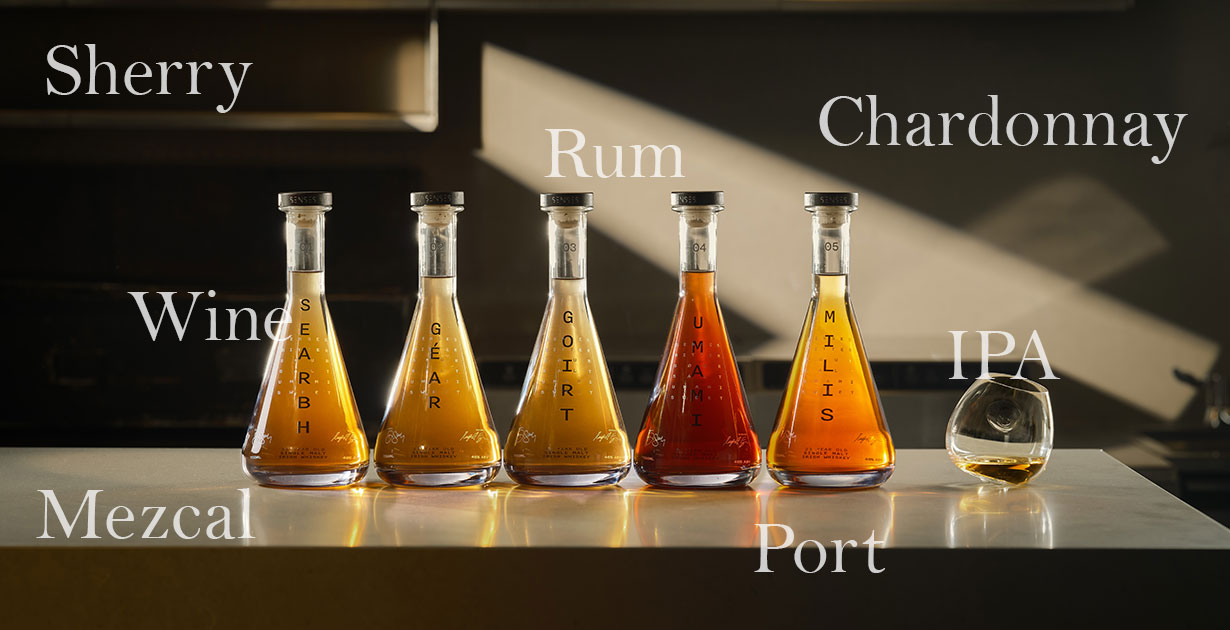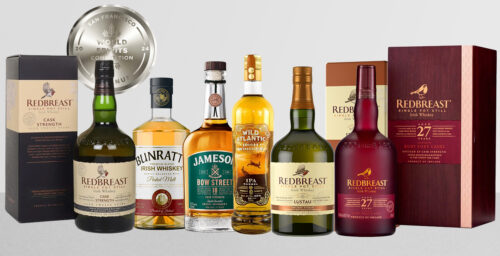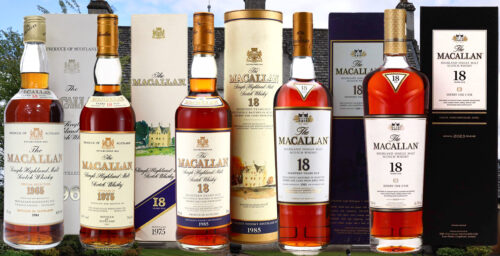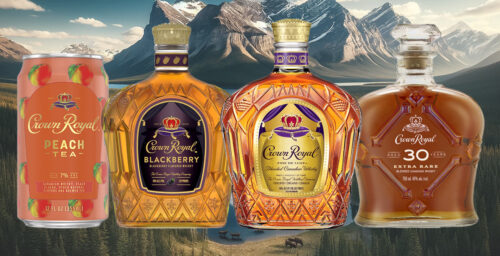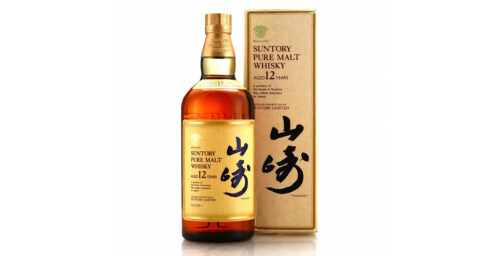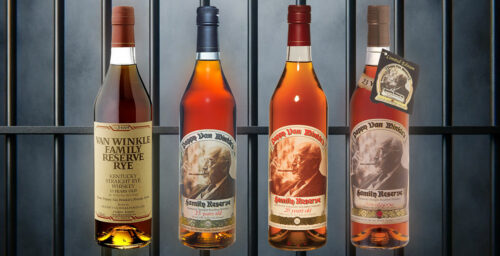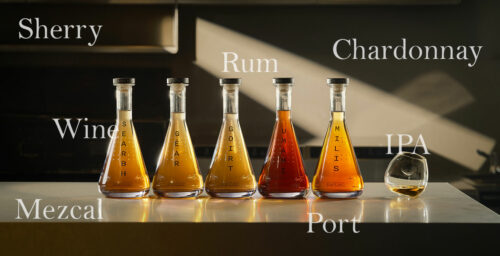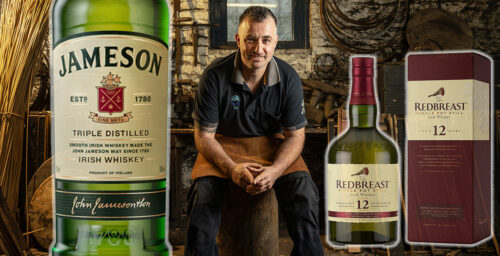When choosing a bottle of whisky to buy, you may often come across the term ‘cask finishing’. Whiskey can be ‘finished’ in a wide variety of casks including sherry, port, wine, and Mizunara. Cask finishing allows whiskey creators, distillers, and blenders to explore new profiles in their finished product, with the finishing casks imbuing the whiskey with new and exciting flavors.
That is just what I did in my recent collaboration with two-Michelin star chef, Damien Grey. As Head Bonder of Egan’s Irish Whiskey, together with Grey, I explored the limits of cask finishing in order to evoke specific flavors for our new SENSES Collection.
From Imperial Stout casks to Mezcal casks, there is no shortage of intriguing cask finishes with which to play.
So, in the interest of exploring how cask finishing not only influenced SENSES, but also how it influences whiskey as a whole, let’s delve deeper into the subject. This is everything you need to know about cask finishing whiskey.
What is cask finishing and why finish whiskey?
Simply put, cask finishing involves taking an already mature whiskey and transferring it to a new cask that often previously held a different alcohol to take on new flavors, colors, and characteristics.
Cask finishing is different from single-cask maturation as it draws flavors from the new casks, leading the whiskey away from its original form, whereas single-cask maturation presents whiskey that hasn’t had any external influence other than the initial cask.
As a process, it came about by coincidence and some degree of trial and error. Most whiskey bonders may have also dealt in other spirits and fortified wines and used these emptied transport casks for maturing whiskeys. Given the prevalence of sherry and port as finishing casks, for instance, you would be forgiven for thinking that cask finishing was always an established and devised practice. In fact, it used to be much more of a combination of pragmatism and convenience.
What are the impacts of cask finishes on whiskey flavor profiles?
As a bonder, cask finishing is one of the most useful tools available to us and it opens the door to enhance and change whiskeys through a time-honored process. Finishing allows a bonder to impart flavors – sweetness, bitterness, smokiness, etc – while also changing a whiskey’s color or mouthfeel. It’s ultimately one of the most diverse tools a bonder has when trying to create and innovate.
What are some of the popular ways of finishing whiskey?
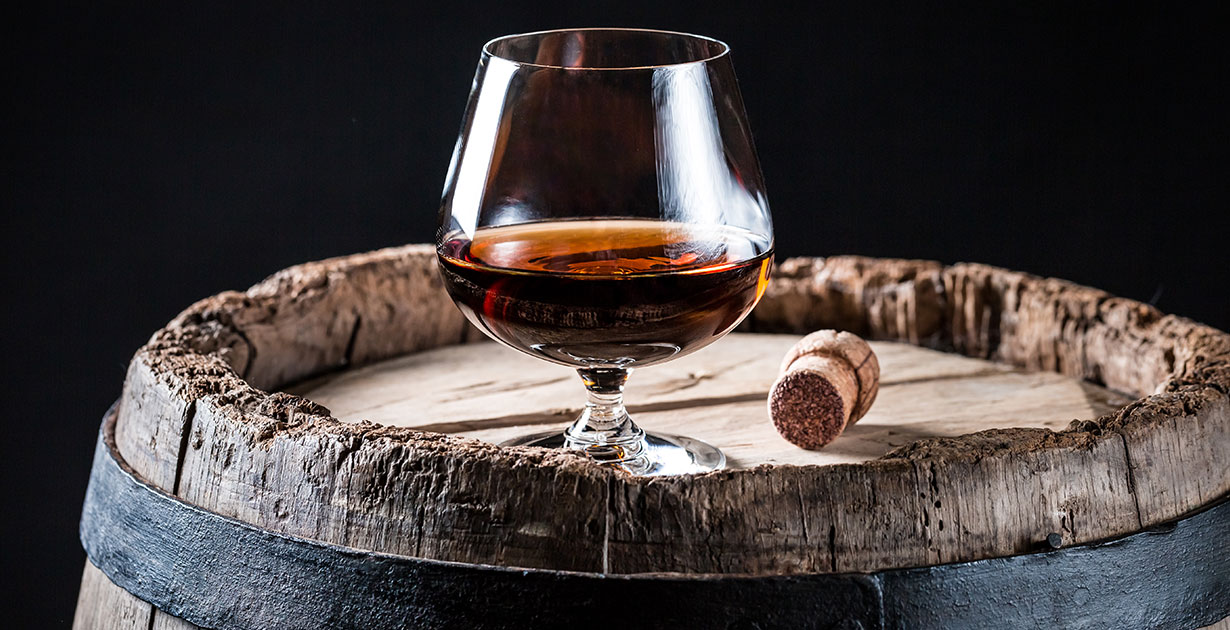
Sherry casks are widely used in whiskey finishing; I love the finish Oloroso and Pedro Ximénez casks impart on whiskeys due to their ability to create evocative flavors. If the taste could be translated into a sound it would be children opening Christmas presents on the 25th. It reminds me of mulled wine and Christmas cake with freshly lit brandy just poured over the top and dark winter fruits; that sweet sherry note that might remind you of the favored tipple of a kindly old aunt.
Red wine casks are another popular vessel for cask finishing and we tend to go for Italian wines like Brunello, Barolo, Barbaresco, and Amarone. These wines can perform similar roles; they are warming, and broadening, and they introduce a beautiful color. Some wines can give truffle notes and leather with a little smoke, but not peat smoke, more barbecue.
The normal starting point of cask finishing tends to be ex-bourbon barrels that are usually used as a first fill. The tradition of using ex-bourbon barrels goes back to post-prohibition when American distillers were legally limited to only using virgin oak, and therefore a barrel only once. This led to a healthy supply of secondhand bourbon barrels for the Irish and scotch markets for which they became the mainstay vessels for maturation, forming the origins of scotch and Irish whiskey as we know it.
What are some of the less common or unconventional ways of finishing whiskey and what unique characteristics do they bring?
I’ve bought into a Mauritian rum called Star and Key which is winning loads of awards in the States right now. It’s made from sugar cane, long-aged, and quite sweet while remaining complex. Usually, rum casks wouldn’t be something I would push whiskey into that cost me £30,000-£40,000 a barrel but the sugar cane rums are pretty sophisticated. Rum finishing yields a slightly grilled pineapple flavor that meets Terry’s Chocolate Orange.
Cognac cask finishing also does beautiful things to whiskey, imparting amazing floral and nutty flavors. Egan’s most popular whiskey is Conviction, which is thanks to the quality of the casks we get from our deep-rooted relationships. We’re also using Pineau des Charantes casks at the moment which is becoming more and more popular with mixologists. Pineau has a really fascinating production method and I suspect will feature more heavily as a finishing cask to give high-end whiskeys a new profile.
Tips for exploring different cask finishes
Go for whiskeys that are finished in casks of products you’d like to drink, especially if they remind you of an event, time, or place, and turn that tasting into something visceral.
Flavors that evoke a feeling or memory are so powerful and that’s something we’ve tried to impart through Senses, for people to go and figure the whiskey out for themselves with a little nudge here and there. I think it’s also important to try to identify the cask partner along with the whiskey as you just get an amazing and unique experience of cohesion.
What is the potential for future cask innovations and experimentation in the whiskey world?
It will need to become completely bespoke as it grows. Whiskeys will ultimately need to become even more exciting and nuanced as consumers become more discerning. Just finishing in a cask because it’s available simply isn’t enough. Boundaries will need to be pushed and I’m all in for it.
What is the SENSES Collection, and how were the finishing casks selected?
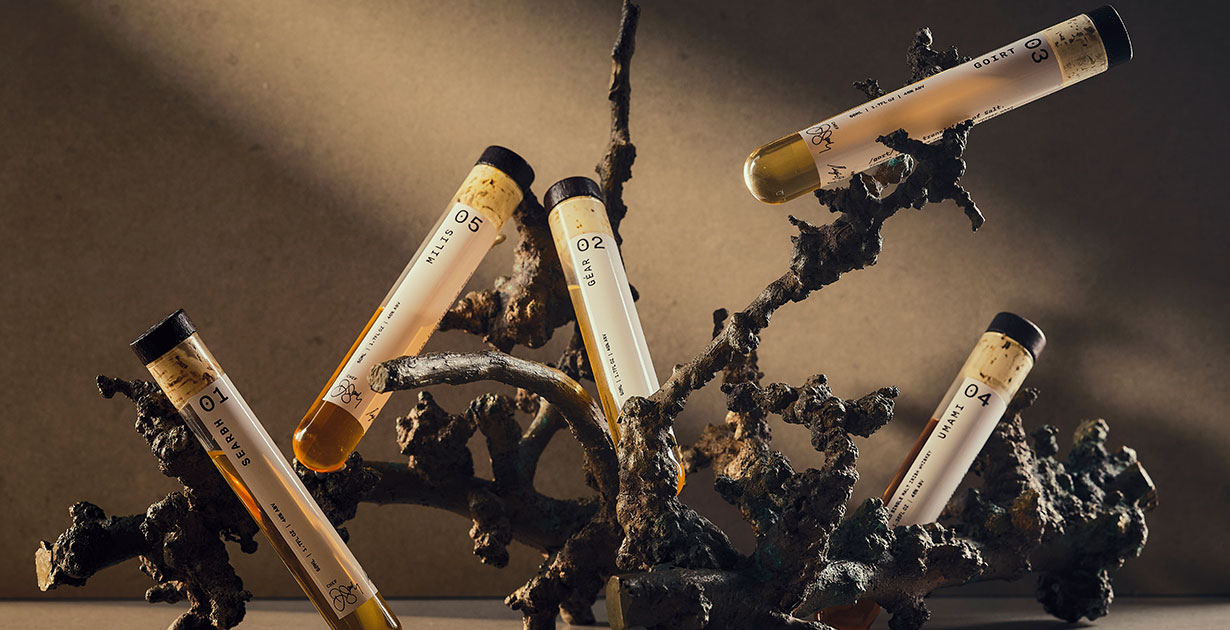
The SENSES Collection is a collaboration between Egan’s Irish Whiskey and Damien Grey, the head chef and founder of the two-Michelin-starred restaurant, Liath. Created from 23 year old Irish whiskeys, the collection is an experiment in cask finishing. Each whiskey was finished in a different cask, and designed to evolve the five building blocks of taste: bitter, sour, salt, umami, and sweet.
Only 200 SENSES sets have been created to enjoy at the exclusive Liath restaurant. The whiskeys, together with Grey’s superb food pairings, create a luxurious and unforgettable gastronomic experience.
Find out more about SENSES here.
Now, let’s chat a little about the process of selecting the finishing casks for SENSES.
When starting with 23 year old single salt whiskey, you need to be confident any next step must elevate what is already a spectacular spirit. The concept of using whiskey as a conduit for delivering each of the five individual characteristics of taste has simply never been done before, by anyone, anywhere. We knew we needed to tread carefully and would end up, quite literally, traveling the globe to find the most unique and suited cask partners for our whiskeys.
We’ve enlisted the expertise of some of the world’s finest wine and spirits producers for SENSES, with some barrels taking 18 months to source and select and several cask partners not having collaborated with the whiskey world before.
We went to any length required to ensure the perfect cask finish, for example, to create our Searbh (bitter) whiskey I put a cask in the back of the car, drove it to Mayo and had it re-charred, filled it with a bespoke Imperial Stout by Dot Brew and filled the now ex-stout cask with the single malt whiskey, forming the most amazing dark-chocolate and coffee notes that gently gesture towards bitterness.
For Goirt (salt), I’d stumbled across a price list from the records of my great grandfather’s spirit importation business which listed Godet, the world’s oldest Cognac, as one of his offerings. I wanted a wine or spirit that had been produced and aged by the sea, so we contacted Jean-Jacques Godet after a more than 100-year hiatus to both re-introduce the Egan family and secure his interest in our initiative, as well as one of his oldest ex-Grande Champagne casks.
Arguably our most leftfield cask used for SENSES was to create our Géar (sour) whiskey; we wanted citrus and mild smokey notes and looked towards a Mezcal cask. We were introduced to a distiller in Oaxaca with an almost mythical reputation for producing spirits that others won’t. Mezcal is the world of yesteryear that whiskey can now just about remember.
Check out award-winning Irish whiskeys from the 2024 San Francisco World Spirits Competition here.

